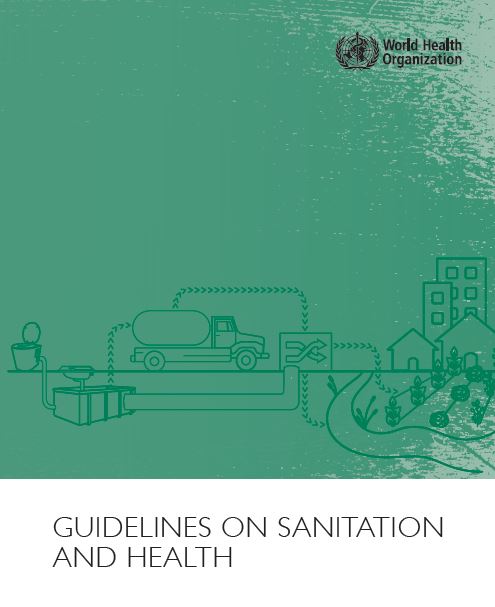Guidelines on sanitation and health
 |
guide Oct 2018 ; 220 pages
Ed. WHO - Genève ; Isbn: 978-92-4-151470-5
Téléchargeable sous format: PdF
Téléchargeable chez l'éditeur
Page de présentation d'un éditeur
Abstract:
Developed in accordance with the processes set out in the WHO Handbook for Guideline Development, these guidelines provide comprehensive advice on maximizing the health impact of sanitation interventions.
The guidelines summarize the evidence on the links between sanitation and health, provide evidence-informed recommendations, and offer guidance for international, national and local sanitation policies and programme actions.
The guidelines also articulate and support the role of health authorities in sanitation policy and programming to help ensure that health risks are identified and managed effectively.
The audience for the guidelines is national and local authorities responsible for the safety of sanitation systems and services, including policy makers, planners, implementers within and outside the health sector and those responsible for the development, implementation and monitoring of sanitation standards and regulations. Contents:
Chapter 1. Introduction . 1
1.1 The significance of sanitation for human health . 1
1.2 Sanitation as a human development issue . 2
1.3 Scope . 4
1.4 Objectives . 6
1.5 Target audiences . 7
1.6 Health authorities mandate . 7
1.7 Methods . 7
1.8 Guidelines structure . 8
References . 9
Chapter 2. Recommendations and good practice actions . 11
2.1 Recommendations . 11
2.2 Good practice actions . 20
References . 26
Chapter 3. Safe sanitation systems . 29
3.1 Introduction . 29
3.2 Toilet . 31
3.3 Containment – storage/treatment . 34
3.4 Conveyance . 39
3.5 Treatment . 44
3.6 End use/disposal . 49
3.7 Applicability of sanitation systems . 52
References . 57
Chapter 4. Enabling safe sanitation service delivery . 59
4.1 Introduction . 59
4.2 Components of an implementation framework . 59
4.3 Policy and planning . 61
4.4 Legislation, regulations, standards and guidelines . 64
4.5 Roles and responsibilities . 68
4.6 Environmental health authorities and their role in sanitation . 70
4.7 Delivering sanitation at local level . 74
4.8 Developing sanitation services and business models . 75
4.9 Fostering the sanitation services market . 78
4.10 Management of special sanitation risks . 79
References . 83
Chapter 5. Sanitation behaviour change . 84
5.1 Introduction . 84
5.2 Institutional and government responsibilities for sanitation behaviour change . 84
5.3 Sanitation behaviours and determinants . 85
5.4 Changing behaviours . 87
5.5 Monitoring and learning for success . 95
References . 97
Chapter 6. Excreta-related pathogens . 100
6.1 Introduction . 100
6.2 Microbial aspects linked to sanitation . 102
6.3 Environmental transmission of pathogens in faecal waste . 114
6.4 Treatment and control . 120
References . 122
Chapter 7. Methods . 125
7.1 Introduction . 125
7.2 Contributors . 125
7.3 Scoping and question formulation . 126
7.4 Evidence retrieval, assessment and synthesis . 128
7.5 Evidence grading . 128
7.6 Evidence-to-Decision (EtD) framework . 130
References . 132
Chapter 8. Evidence on the effectiveness and implementation of sanitation interventions . 133
8.1 Introduction . 133
8.2 Summary and discussion of evidence . 133
8.3 Reviews of intervention effectiveness . 134
8.4 Reviews of implementation . 141
References . 142
Chapter 9. Research needs . 151
9.1 Pursuing a sanitation research agenda . 151
9.2 Research agenda . 151
References . 157
Mots clefs: |
assainissement (CI) (DT) (OP) (ope) , santé (CI) (DT) (OP) (ope) |
Editeur/Diffuseur: |
|
WHO
-
World Health Organization - Genève - Suisse |
En cas de lien brisé, nous le mentionner à communication@pseau.org